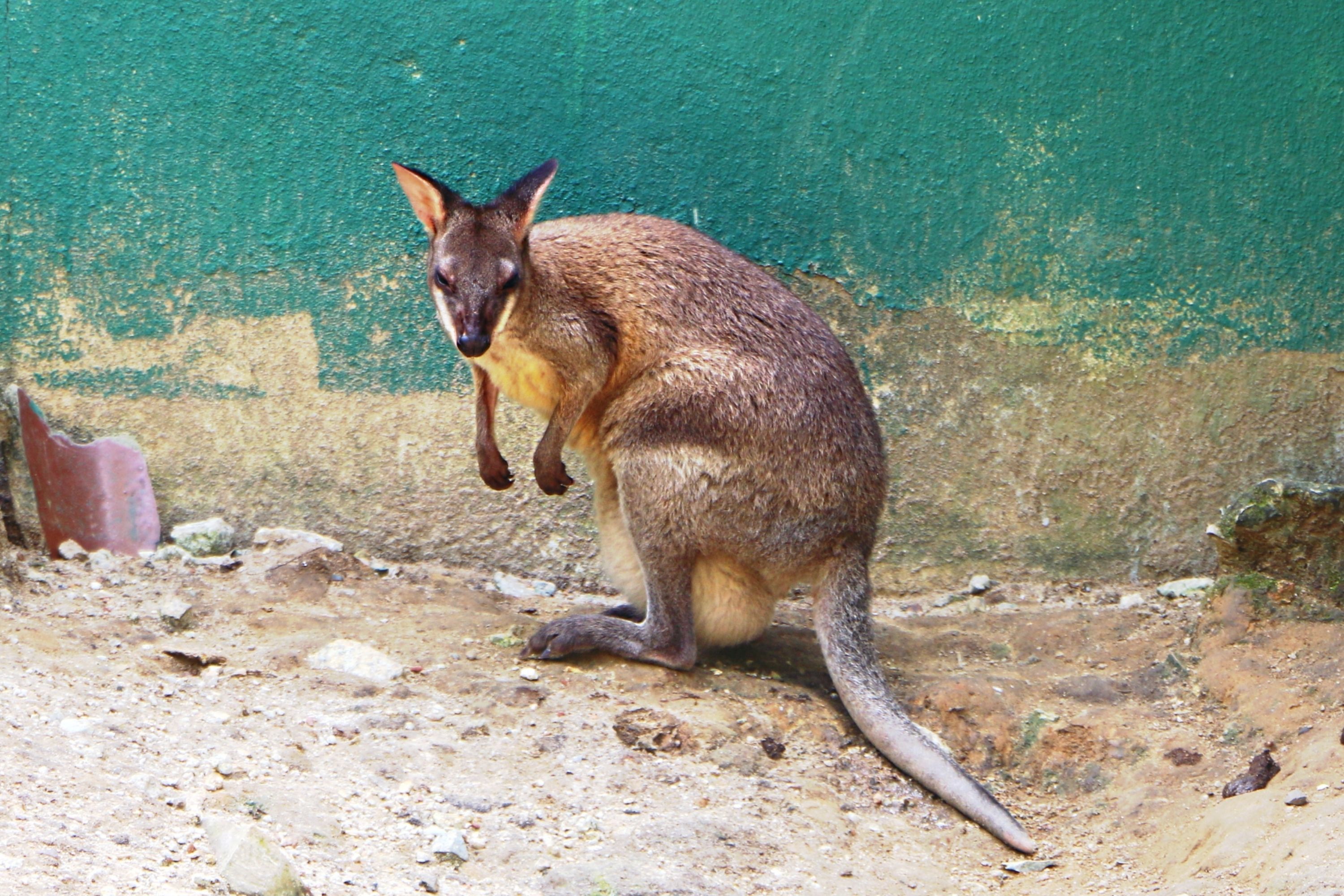Red-legged pademelon
(Thylogale stigmatica)

Description
The red-legged pademelon (Thylogale stigmatica) is a species of small macropod found on the northeastern coast of Australia and in New Guinea. In Australia it has a scattered distribution from the tip of Cape York Peninsula in Queensland to around Tamworth in New South Wales. In New Guinea it is found in south central lowlands. The red-legged pademelon is usually solitary but may group together when feeding. It is found mostly in rainforests, where it is rarely seen, but it is not considered threatened. In New South Wales, however, it is considered to be vulnerable. It feeds on fallen fruit, leaves and grasses. It weighs 2.5 to 7 kg and is 38-58 cm long with a 30-47 cm tail. Red-legged pademelons have soft thick fur, grey-brown on the back and cream on the belly. The cheeks forearms, outside and inside of their hind legs are a rusty brown colour. Its common name refers to the rusty colour on the limbs. They also have a pale cream stripe on their outer thigh. Rainforest forms are usually darker in colour than those from the open country. Their tail is short and thick, and an average-sized pademelon may be 2+1⁄2 feet (76 cm) tall when standing upright. They are 35-58 cm when not standing upright, have a 30-47 cm tail and weigh between 2.5 and 7 kg. Due to land clearance, red-legged pademelons have suffered a reduction in range, but they still remain common where the habitat remains, and they are not seriously disturbed by selective loggings. Distribution is discontinuous, especially in the north where it appears to be limited by the availability of vegetation providing satisfactory cover. The red-legged pademelon seems to prefer rainforest areas, but is also found near both sclerophyll and dry vine scrubs. Extensive rainforest clearing has reduced its available habitat, but sufficient parks and reserves currently exist throughout their range to secure their status. Forest clearing may benefit the red-legged pademelon to a certain point. A higher number of forest fragments means the pademelons have more adequate pastures that provide them with sufficient food. Only two types of subspecies inhabit Australia; Thylogale stigmatica and the Thylogale wilcoxi.
Taxonomic tree:







